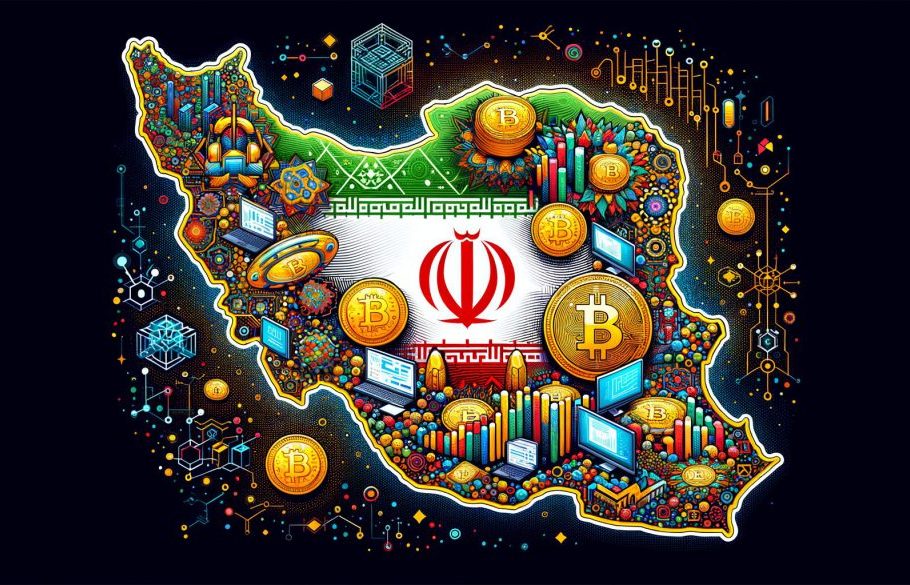
Iran’s Digital Gold Rush: Over 41% of Population Hold Crypto Assets
The Arzdigital group recently published its second annual report on Iran’s cryptocurrency landscape.
The Arzdigital group recently published its second annual report on Iran’s cryptocurrency landscape. According to the report’s data, out of a target population of 53.2 million, 41.9% have experience investing in the digital currency market.
Nearly a decade has passed since cryptocurrencies made a serious entry into Iran’s economic sphere. During this time, new financial technologies have managed to carve out a place in the asset portfolios and daily transactions of Iranian citizens. The Arzdigital annual report limits its target audience to individuals over 18 with internet access. Given that adults make up 72.8% of the population and internet penetration stands at 81.7%, the study’s sample size covers 53.2 million people.
Cryptocurrency Adoption in Iranian Society
Data from a comprehensive survey indicates that cryptocurrencies are rapidly penetrating various layers of Iranian society. The findings reveal that a wide range of citizens—from students to employees, entrepreneurs to retirees—are engaged with digital currencies in some form. The study also shows that 89.2% of the target population is familiar with the concept of cryptocurrencies.
The provinces of Khuzestan and Mazandaran show the highest familiarity rate at 95%, followed by Alborz, Fars, and Gilan at 94%. While most provinces exhibit familiarity rates above 85%, Qom (57%), Ilam (66%), and Kohgiluyeh and Boyer-Ahmad (71%) lag significantly behind the national average.
Kurdistan (57.4%) and Hormozgan (53.8%) have the highest participation rates in the cryptocurrency market. Tehran and Alborz provinces follow with 40.9% and 46.9% participation, respectively. However, some provinces, such as Qom (28.1%), show lower engagement in this market.
Popularity of Cryptocurrencies Compared to Other Investment Markets
According to the study’s data, out of the 53.2 million target population, approximately 21.9 million (41.9%) have experience investing in the cryptocurrency market.
An analysis of investor behavior across different financial markets shows that cryptocurrencies, with a 41.9% share, are the most popular investment choice among respondents. The stock market follows at 20.3%, while gold and coin markets rank third at 16.1%. The automotive, real estate, and property markets account for 7.7%, followed by forex at 6.7%. About 3% of users are active in other financial markets, while only 4.3% of respondents stated they do not participate in any financial market.
The Trend of Airdrops Over the Past Year
From 2014 to today, airdrops have evolved from a simple concept into one of the most powerful tools for blockchain projects to market themselves and attract users. Throughout the journey of Iranian cryptocurrency users, it’s hard to find any phenomenon that has captured their attention quite like this. The image of people—young and old—tapping away on their phones in the streets, at work, or during breaks is the perfect depiction of the Telegram airdrop craze.
An analysis of different age groups' engagement with airdrops shows that Telegram airdrops enjoy high popularity across all demographics. The over-50 age group has the highest participation rate at 98%, while infrastructure-based airdrops follow a completely different pattern. In this category, the highest participation (around 27.6%) comes from users aged 20 to 40. This significant difference may stem from the greater technical complexity and specialized knowledge required for infrastructure airdrops.
Collected data reveals that long-term investing (49.43%) and short-term trading (45.47%) are the two dominant strategies in Iran’s cryptocurrency market. Airdrops rank third at 26.70%, while other investment methods—including blockchain gaming, mining, staking, NFT trading, and arbitrage—each account for less than 10% of market activity.
Challenges Facing Iranian Users in the Cryptocurrency Market
As cryptocurrency adoption grows in Iran, users face numerous challenges, which can be divided into two main categories: international and domestic challenges.
International Challenges
The policies of global exchanges toward Iranian users are constantly shifting, often toward tighter restrictions. A clear example is the stricter identity verification policies imposed by major exchanges like Binance and KuCoin in recent years. This trend reflects exchanges' increasing compliance with international regulations. However, smaller exchanges may temporarily adopt looser policies to attract users.
The 2024 survey results show that the inability to verify identity with Iranian documents is the biggest challenge, accounting for over two-thirds of responses. A comparison of user challenges between 2023 and 2024 reveals a shift in priorities: while identity verification (22.9%) and VPN usage (22.1%) were equally problematic in 2023, identity verification has become significantly more prominent in 2024.
Domestic Challenges
In 2024, with increasing international restrictions and sanctions against Iranian users, the pattern of using domestic cryptocurrency exchanges has undergone notable changes. Nearly half of users cited ease of direct purchases with bank cards as the primary reason for using local exchanges.
Survey results indicate that:
- 46% of users consider direct bank card purchases the biggest advantage of domestic exchanges.
- 22% use them solely for Tether (USDT) conversion, highlighting their role as bridges between domestic and international markets.
- 10% value legal recourse as a key benefit.
- Persian-language interfaces and trading features collectively matter to just 3% of users.
The top challenges for domestic exchanges in 2024 are:
- Limited variety of cryptocurrencies
- High transaction fees
- System outages during extreme price volatility
Users also prioritize practical aspects of foreign exchanges:
- Higher liquidity and broader crypto selection are the top advantages.
- Lower fees and advanced trading tools are secondary but still significant factors.
Economic Analysis of Iran's Cryptocurrency Industry
The Digital Currency Report presents a comparative analysis of Iran's cryptocurrency industry against other economic sectors in the first half of 2024. According to official statistics, Iran's GDP reached 5,069,100 billion tomans during this period, with the cryptocurrency industry contributing a significant monthly turnover of 35,000 billion tomans.
A comparison between the crypto industry's turnover and Iran's GDP reveals that digital currencies account for 1.8% of the national economy. With 218 active brokers generating 35,000 billion tomans in monthly transactions, a dynamic economic ecosystem has emerged in this sector. Even in the most conservative estimates, crypto transactions make up 1.4% of GDP.
Iran vs. Global Trends
Per a "Triple A" report, 61% of global crypto holders are male, while 29% are female, with the largest age group being 25-34 years old. In Iran, however, 82% of crypto users are men, and only 18% are women, with the 20-30 age group being the most active. The gender participation gap in Iran stands at 64.6%, significantly higher than the global average of 22%.
Estimates suggest that nearly 42% of internet-accessible adults in Iran are crypto users. According to the Digital Currency Report, the primary reasons for crypto's popularity among Iranians include:
- Hedge against inflation
- Access to global markets
- Pursuit of new economic opportunities
The report also highlights that Iran has 22 million cryptocurrency investors—more than all of Europe, which has around 10 million.










